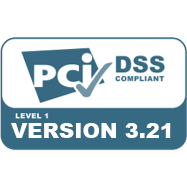Be proactive with your payments
There are all sorts of problems you’ll face running your new business. Questions you never thought you would need answers for. How you go about finding solutions is some of the fun (though let’s be honest, sometimes it doesn’t feel like fun)
When it comes to payments, sometimes the reactionary approach can eat away at your business and have far-reaching repercussions to one of the most fundamental areas of your new business. Thinking about payments first lets your new business be flexible and smarter with one of its most essential aspects: money.
So, here’s our PSA

Think payments first, then think about the rest.
Welcome to the final part of our 5 part series, all about thinking payment first:
- Part I: Think payments first
- Part II: Planning payments first
- Part III: Payments in your industry
- Part IV: The not so fun stuff – Rules, Regulation & Compliance
- Part V: Be proactive with your payments
Payment Quicksand ( or flytrap )
When it comes to starting your business, the first natural step is to get a business bank account. There are lots of good reasons to keep your business finances separate from personal. For entities like corporations, it’s important to set up because your company gets a cheque for some value, maybe as low as $1, to issue shares.
You then go about your business creating your service and offering and probably start hiring people. This is when most businesses face the first payment hurdle. You walk back into your bank and ask, “how can I pay my staff?” The bank says here’s a stack of documents to sign and for a couple of hundred dollars a month you then get the right to send money electronically to your people.
Great. Now, how do I take card payments? Your bank will usually turn around and say, “we don’t really do that, but here’s a business card of our approved affiliate.” You then go to their affiliate to get an in-store and/or e-commerce account ( note: they are different unconnected systems ) so you can start taking payments. Meanwhile, there are more documents and fees and likely your bank gets a cut from referring you.
But as technology advances, you might, for example, require tap for your in-store payments, and the affiliate that the bank provided doesn’t actually offer tap or apple pay, so now you need to get a new in-store provider. Some more documents, plus more fees of course.
And then there’s your e-commerce, but changing that is too complicated, and it works just fine as it is – so rather than pay a developer to make changes you keep it the same. Meaning you have one stream for in-store and another for online sales.
Now, how do I pay for my inventory that comes from another country? Well, you can go and stand in line at your branch every time and hope the teller keys the information incorrectly and keep your fingers crossed that the money arrives on time. Eventually maybe if you become a “commercial client”, sign some more documents and pay a fee for some software, you can create a template to make it a little easier to remember the information.
Next, you find out for some international payments, you need to transfer funds into a different currency to send a wire. The rate from your bank is nowhere near the rates you can get from other providers, so for most businesses, you go to yet another service for lower foreign exchange (fx) rates. You sign more documents and pay more fees.
At the end of the day, your business is now running on a bunch of fragmented financial services, and it all stems from you walking into your bank and asking them for help. Why don’t they have a unified solution?
Each time you find another solution, you complicate the process, and if you didn’t notice, signed more agreements and are paying out even more for disparate services.
Little by little you become another victim of this complex issue. Sucked into quicksand or a venus fly trap, you didn’t notice you gave a bit more each time.
When you think about payments first, this horror story is avoidable, and you can keep more control and clarity for your business.
Be mindful of each payment type: cost, timing and limits
Each type of payment method and channel is unique in its own right. Pay attention to each of them. If left unattended, the cost of multiple payment methods can easily sneak into your bottom line.
Time and time again, we encounter businesses that have not factored in all payment costs, and their profits are significantly reduced. If you think about payments last, you could spend a pretty penny on a new business only to discover it’s not profitable after factoring in payments’ direct and indirect costs.
It’s not always about the rate.
Take credit card payments, for instance, they are measured by percentage rates. For most small to medium-sized businesses, chasing the cheapest rate is likely not the most cost-effective approach. Look at a provider’s additional offerings.
Take this back of the napkin scenario where your business makes 100 sales at $100 every day.
Payment Service Provider A
Offers a flat rate of 2.8%
Card fees for daily sales = $280
Provider A does not include an integrated accounting solution with built-in AR/AP workflow*, so you need to hire accounts payable, accounts receivable and bookkeeping staff.
Additional staff costs per month ~ $1,500
Annual cost of fees and reconciliation…
$120,200.00
Payment Service Provider B
Offers a flat rate of 3%
Card fees for daily sales = $300
Provider B includes an integrated accounting solution with built-in AR/AP workflow*, which significantly reduces your staff costs.
Additional staff costs per month ~ $100
Annual cost of fees and reconciliation…
$110,700.00
*Rates do not necessarily equate to value add offerings and services. It’s important to know a payment service providers additional offerings and fee schedules
A lower rate costs you an additional $9,500 per year. Rates alone will not give you an accurate comparison between providers.
More than banks
As a FinTech, we are (of course) biased; running your business doesn’t always need a traditional bank to operate your day-to-day. Understanding how your money flows in and out of your business can help you look elsewhere and could open up other more cost-effective opportunities.
We also think our Peloton Portal can help you dramatically decrease the costs of payments in dollars, time, and effort.
Understand every dollar
No matter who you choose to work with for your payments, don’t continue to react by adding payment providers. The question “what do you make from every sale” shouldn’t leave you with the disappointing answer “I don’t exactly know – it’s too complicated for me and my staff to figure out”.
Thinking about payments first helps you shift your mindset and in turn, it allows you to make great decisions, course correct, problem-solve or open up new opportunities. You don’t just make the most of every dollar; you understand every dollar.

Good luck with your new business! Now go and change the world.
More questions?
It’s very possible, you now have a lot more questions. We’re hoping you do.
It takes practice to think payments first. The Peloton team has been putting payments first for more than a decade. To find out how our Peloton Portal and our team can help, visit paywithpeloton.ca



